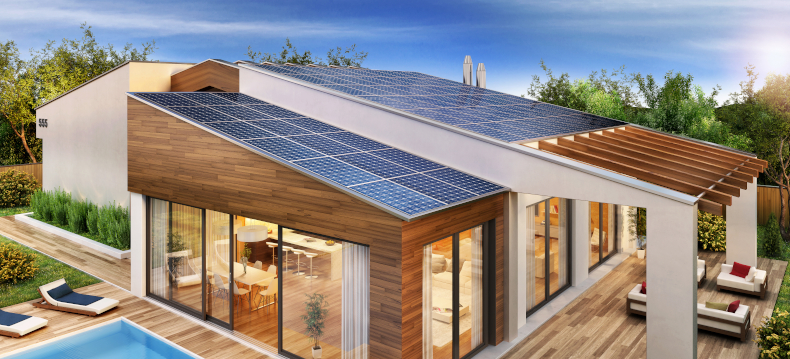
There’s an old adage that sums up the solar industry. “Necessity is the mother of invention.” Due to man’s pollution of the earth, scientists and inventors have explored methods to power our world without adding more pollution. It may be some time before you see some of these solar technologies in use, but some are already proving effective.
The Pyron Solar Triad uses a short focal-length, acrylic concentrating lens to reflect and refract light, effectively concentrating it to equal the power of 6,500 suns in a small pinpoint of light. A secondary optic captures this concentrated light and focuses it on a PV cell. According to the company, the HE Optics System produces 800 times more energy than a similarly-sized silicon solar cell.
An MIT professor, Daniel Nocera, formed a company this year to commercialize a new technology that can “split water” and store solar power. The company’s key objective is to achieve a solar energy breakthrough by making solar energy cheap and more easily available.
“The idea is to use solar panels to power the electrolyzer to produce hydrogen which would be stored in tanks. When people need electricity, the stored hydrogen would be put through a fuel cell.”
If solar power was as easy to install as putting new shingles on your house, or painting your roof with a solar paint, it would revolutionize home solar installation. The paintable solar technology is called silicon ink, and according to the U.S. National Renewable Energy Laboratory, solar cells using this technology have “demonstrated a record 18 percent conversion of efficiency.” Solar shingles are already in limited use around the globe, but they are currently more expensive than traditional solar panels.
Large thin-film solar panels: This proprietary system uses amorphous silicon-based thin film technology to deliver the world’s most powerful thin-film panels and combines low-cost materials with one of the industry’s most advanced fabrication technologies. The company’s thin-film solar panels have a frameless design, eliminating two predominant real-world reliability challenges for thin film panels: water penetration and weakened structural integrity over time.
Japan is developing a giant space-based solar power system to transmit solar energy to earth from 36,000km above the earth within the next three decades. The Japanese government is backing the $21 billion project, which will include a solar power space station with four square kilometers of solar panels, producing an estimated one gigawatt of electricity – enough for almost 300,000 homes in Tokyo.
The Solar Roadways concept would pave roads with glass panels to collect and distribute solar energy to light the road at night and heat it in winter, with enough electricity leftover to provide power for homes and businesses. The founder, Scott Brusaw, estimates that each mile of solar panels could power 500 homes, and predicts that the cost of producing a single 12′ X 12′ Solar Roadway panel could reach about $5,000.
Solar power is here to stay, and the sooner you explore how much you can save, the sooner you can enjoy the benefits of residential solar power. Go to HahaSmart.com and try our price checker tool. It tells you how much solar power you need, and how much you can save.
Please visit our solar blog to find out more about the benefits of going solar.


Input your address to see if it is solar friendly and how much you can save with solar.
Great. Your address is perfect for solar. Solar incentive is still available. Select monthly utility cost and calculate the size of solar system you will need now.
| kw System size | years Payback period | Lifetime savings |
No money down, 100% finance is available.
|
|
Looking for certified solar installers? Sign up now and we will find them for you. |
Comments